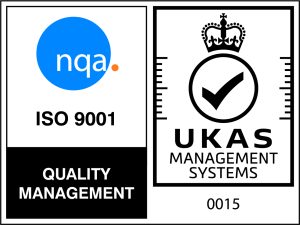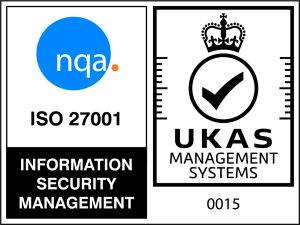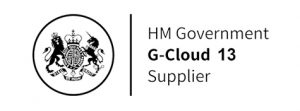Case Study
Microsoft SharePoint
Neo Technology’s Role in Migrating Our Client from On-Premise SharePoint to the Cloud



SUMMARY
Our client faced a critical challenge of migrating from on-premise SharePoint 2013 to the cloud version before the end of support in April 2023. Our client sought the assistance of Neo Technology, a technology solutions partner, to address this issue.
Neo Technology proposed a migration to SharePoint Online, leveraging global teams to reduce costs and increase technical expertise. The migration aimed to ensure support for SharePoint aligned with our client’s cloud strategy, and provided numerous benefits, including improved user experience, cloud advantages, potential cost savings, and enhanced integration with other cloud-based services.
THE PROBLEM
Our client relied on SharePoint 2013 for document management, storage, and several key business applications. However, SharePoint 2013 would no longer be supported by Microsoft from April 2023. This posed a significant challenge for our client, as continuing to use an unsupported application would expose the organisation to stability and security risks. Moreover, SharePoint 2013 did not align with our client’s cloud strategy, which aimed to move on-premise applications to the cloud whenever possible. Therefore, our client needed to migrate from on-premise SharePoint to the cloud version to ensure continued support, enhance functionality, and align with their long-term strategic goals.

Lack of Sustainability
The client relied upon critical business systems that were due to be discontinued. Meanwhile, their existing commercial support contracts with external providers were due to expire or be renewed. A sustainable and shrewd solution was needed.

Compromised Data
SharePoint 2013 held a significant amount of business and customer data which would need to be migrated safely and efficiently with minimal disruption to the business.

Inflexibility
SharePoint 2013 was running several key business applications, many of which included customised developments. This included key functionality such as allowing employees to view tenancy documents, the ability to auto-store documents and upload documents against assets.

Future Proof
The proposed solution needed to represent a sustainable approach and responsible financial investment that would deliver meaningful Return on Investment (ROI).

Lack of Technical Support
Existing commercial IT support contracts with 3rd party providers would soon be due to either expire or be up for renewal so there was a need to ensure continued technical and other support provision.
Resourcing
Resourcing needed careful consideration. How could our client ensure appropriate resourcing for such a major project, with the right skills and expertise needed? Was that something they could resource from existing employees, or would they need to work with existing or new external technology partners? If the teams could be resourced internally, how would they ensure sufficient capacity to carry out business as usual activities alongside managing the project needs, including working with third party providers, without impacting the business?
Opportunities for system upgrades AND Modernisation
In addition to resourcing, we identified opportunities to modernise and upgrade the system architecture. This was a brilliant opportunity for the platform to be simplified, more flexible and more accessible for users at ur client. This would increase adoption of the system ensuring all documents were stored in one place.
Customised developments were being used for extranet sites and internal team sites.
Some business applications were integrated with other platform applications for Enterprise Resource Planning (ERP) and Customer Relationship Management (CRM).
Many key documents and forms, such as payment, credit refund and balance transfers requests, relied on integration with other applications.
All custom developments would need to be included in the project scope, other than one which was expected to be decommissioned.
All files would need to be migrated to the new system with reconciliation of all links to the platform.
The system architecture needed simplification, changing existing custom connectors and handlers with SharePoint Online.
The business was missing out on SharePoint’s enhanced software features available via Cloud based applications.
In addition to business requirements, non-functional requirements included set up of a secure repository for resident related documents.
Any proposed migration must fit with the strategy of moving all software applications to the Cloud as part of a wider Cloud migration programme, to move away from on-premise datacentres by January 2022.
General documents stored in SharePoint would be accessible to all employees using SharePoint Online. In addition, external partners will also need appropriate levels of access.
THE BUSINESS CASE
Using SharePoint Online would ensure the business continued to have a supported application which aligned with the overall strategy of moving fully to the Cloud.
User Experience would be enhanced with improved application functionalities and interface.
Moving to the Cloud would ensure better integration with other cloud-based services and scalability to meet future needs.
Users would have immediate access to new SharePoint Online features as soon as available.
Staff members will be able to access all their SharePoint sites and applications remotely.
With the existing hosting support contract due to be terminated by January 2022 the project needed to be fully delivered within that timeframe or an alternative plan implemented, perhaps a staged approach with associated cost, resources and time implications.
Potential cost savings included reduced reliance and costs associated with the on-premise hosted service.
Not delivering the change was not an option as SharePoint 2013 would not be supported after April 2023 and continuing to use an unsupported application would have significant stability and security risks.
Moving fully to the Cloud would enhance features and functionality and increased reliability.
There was an opportunity to establish an upgrade pathway aligned with our client’s Cloud strategy, that would offer users improved application functionality and integration with other Cloud applications, delivering immediate and longer-term business benefits and supporting improved business performance and future growth plans.
STRATEGY
Options Considered
Our client considered several options for the migration from on-premise SharePoint 2013. The options included doing nothing, remaining with SharePoint 2013 and shifting to a cloud-based hosting model, upgrading to SharePoint 2016 or SharePoint 2019 (hybrid on-premise and cloud), or migrating directly to SharePoint Online. Each option had its advantages and disadvantages.
After careful evaluation, the option to migrate directly to SharePoint Online, was recommended as the most favourable approach. This option offered immediate and full migration to the cloud version, avoided the complexity of multiple upgrade steps, and provided Our client with access to new SharePoint Online features as they became available.
Recommendation
Neo Technology recommended migrating directly to SharePoint Online as it offered the most direct path to the cloud and provided numerous benefits. The recommendation was based on the technical advantages, improved user experience, better integration with cloud-based services, and alignment with Our client’s cloud strategy. Migrating to SharePoint Online would require significant development efforts, particularly in migrating custom solutions, but the long-term benefits outweighed the challenges.
Neo Technology’s expertise and global teams would play a crucial role in reducing costs, ensuring a smooth migration, and enabling Our client to embrace the cloud fully.
SCOPE
The scope of the project involved migrating from on-premise SharePoint 2013 to SharePoint Online, a cloud-based solution. Our client utilised SharePoint 2013 for various purposes, including EDM resident-specific documents, finance forms, extranet sites, and internal team sites.
These custom developments needed to be included in the migration process. Additionally, integration with other applications, such as Northgate and CDC, was crucial.
To address the diverse requirements, the project was divided into individual workstreams, allowing for detailed scoping, timing, and cost analysis.
Justification for Change
Migrating to SharePoint Online offered compelling justifications for the change. Firstly, it would lead to an improved user experience by providing enhanced application functionalities and a better interface. Secondly, it aligned with Our client’s cloud strategy, paving the way for future cloud benefits such as reliability, scalability, and better integration with other cloud-based services.
Thirdly, the migration presented the potential for cost savings by reducing reliance on a hosted service. Lastly, it eliminated the risks associated with using an unsupported application, ensuring stability and security for Our client’s document management processes.
Future-Proofing for Electronic Document Management (EDM)
As part of the project planning process, future-proofing was deemed necessary to accommodate potential future projects that may involve electronic document management (EDM). Below are some of the potential features that could be included:
The dashboard should be designed to provide a centralized location for managing electronic documents related to the tenancies and properties. The dashboard should be accessible to authorised users and should allow for searching files across multiple tenancies and properties. It should also allow for uploading new ad hoc documents.
In addition to ad hoc document uploads, the dashboard should allow for the bulk upload of files. This feature would be useful in cases where multiple documents need to be uploaded at once.
Residents should be able to access a similar dashboard for managing their own documents related to the property they reside in. This would allow residents to easily access important documents such as their lease agreement, rental receipts, or any other important documents related to their tenancy. The system should also allow for the uploading of new documents by the residents.
THE SOLUTIONS
We recommended an immediate and full migration to SharePoint Online as the optimal solution to be used by our client for their document management, applications, forms, automated workflows and business processes, including integration with other applications and Office 365.
This would offer the most direct migration path to a full cloud migration so benefits could be fully realised. It also meant we avoided additional costs, disruption and potential risks of a multi-upgrade, stepped approach.
It was important that the project aligned to our client’s technology strategy, ensuring an efficient, easy to use digital journey for provision of services and support to residents as well as supporting staff to provide the highest standards of service. In addition, the project needed to align with the Cloud strategy and demonstrate clear financial benefits.
Our recommended option of a full migration to SharePoint Online provided the following benefits:
TECHNICAL
- Up to date with the latest technology.
- No infrastructure overhead.
- Integration with Cloud/M365 apps and services by default.
- Migration to SharePoint Online is done once, as opposed to extra steps with a newer on-premises version before a later move to the Cloud.
- Easier to collaborate with external partners.
- Easier to make documents available to customers where appropriate.
USER BENEFITS
- A range of additional features and improved user experience.
- Independent browser.
- More responsive user interface.
- Easier to access files anywhere and on any device, without needing a Virtual Private Network (VPN).
- Options to set compliance standards – for example for file retention.
- Documents can be viewed and edited within Microsoft Teams.
- Document approvals can be automated, including audit trails.
- Fewer limitations on file names.
- High-Level Requirements
- Data Migration Size
- Sustainable Technology Solutions
- Resourcing and business support
- Sustainable Technology
- Project management
The migration project’s technical requirements included implementing a cloud-based application (SaaS), ensuring security by design, establishing disaster recovery measures, integrating with cloud apps and services, migrating SharePoint 2013 sites, and analysing and redesigning third-party application integrations. The user and functionality requirements varied across different workstreams. For example, the EDM workstream would focus on creating a repository for resident-related documents, migrating files and reconciling links with Workwise, and simplifying the architecture by changing existing custom connectors and handlers between DCRM and SharePoint Online. Detailed scoping and further investigation would refine and define the specific requirements within each workstream.
The migration project involved transferring nearly 1TB (terabyte) of data from SharePoint 2013 to SharePoint Online. This significant amount of data required careful planning and execution to ensure a successful migration. Data migration is a critical aspect of the project, and precautions must be taken to minimise the risk of data loss or disruption during the transition.
We introduced our housing association client to appropriate technologies to meet their current needs and to provide a strong, sustainable framework for future development and growth. This included introducing our client to the relevant software, apps and technology stacks to fit project and business requirements.
We provided additional support and expertise by ensuring the client’s IT department had access to reliable, external support from our skilled global teams, which could be scaled up or down as needed. This meant we could introduce the capabilities needed to maximise efficiency, scale and value.
The benefits of this were that relevant project roles and expertise could be introduced earlier and at each appropriate stage of the project to meet the business’ needs. This included access to System Architects, Project Managers and other key roles and functions to support effective delivery of individual project elements and provide the skills and expertise needed to achieve overall project goals and objectives.
Our approach is based on collaboration and communication, working in partnership with our clients and bringing in relevant skilled team members to provide seamless collaboration. We implement Agile practices so we can deliver high quality results with minimal risk.
We introduced our housing association client to appropriate technologies to meet their current needs and to provide a strong, sustainable framework for future development and growth. This included introducing our client to the relevant software, apps and technology stacks to fit project and business requirements.
This was a far reaching, high impact project and our client wanted a partner they could be confident had the relevant expertise and knowledge, who would deliver the project successfully, with minimal disruption to business or users and be able to provide the level of expert resource and support needed.
We worked closely with our client, to understand their objectives and requirements, to discuss and agree a clear, structured approach with detailed planning and to anticipate and mitigate any potential risks.
Moving away from a hosted data centre was a more complex, potentially riskier route due to integration with on-premise applications and our approach included careful planning around this, working with our client team and relevant 3rd parties. We also considered user impact, putting in place appropriate and timely communication, training, and support to ensure a positive shift, readiness for change and to develop user skills and confidence.
Nearly 1TB of data in SharePoint 2013 needed to be migrated and certain custom solutions were not accommodated on SharePoint Online, which meant significant re-development to migrate to SharePoint Online and extensive testing provided by our expert teams.
THE RESULTS
By partnering with Neo Technology, our client successfully resolved the challenge of migrating from on-premise SharePoint to SharePoint Online. This migration aligned with our client’s cloud strategy, ensured support, improved application functionalities, and provided numerous benefits.
Neo Technology’s global teams played a crucial role in reducing costs, leveraging technical expertise, and ensuring a smooth migration process. With the successful implementation of SharePoint Online, our client could embrace the advantages of the cloud, enhance collaboration, and streamline document management across the organisation.
From an ROI perspective, there were a number of benefits to the business.
01
Although requiring initial investment, there were clear and demonstrable savings – in financial terms as well as productivity and time. Cost reductions included removal of on-premise annual support costs and upgrade costs and there were clear benefits around minimal downtime required, along with increased security and reliability.
02
Non-Financial Benefits included access to additional features and functionality and increased user satisfaction.
03
An additional benefit was greater data transparency relating to software Service Level Agreements (SLAs) which supported improved data management and governance across the business.

WHY SHAREPOINT ONLINE?
Over 200,000 organisations and more than 190 million people currently use SharePoint for their intranets, team sites and content management.
As well as access to automatic upgrades, new and exclusive releases and features, a key benefit is the ability for users to work from anywhere, anytime, including offline, without restriction to devices or networks.
Scalability was also an important benefit for this and our other clients. The monthly subscription model allows businesses to easily scale up or down, only paying for what’s needed.
Additionally, there are multiple layers of security ensuring compliance with data is secure and protected with risks minimised. Time-consuming tasks such as backups, maintenance and patches are no longer necessary as upgrades, maintenance and releases are included, meaning your IT team can focus on other business critical tasks.
THE
CONCLUSION
A key element of our client’s business strategy is to work towards greater sustainability. It was important that the solution we proposed was sustainable, fit for purpose to address current challenges and opportunities but also sufficiently flexible and scalable to allow for future growth plans and to adapt to the changing needs of the business and the wider business environment.
Working with our expert global teams to support the recommended migration to SharePoint Online allowed us to bring the latest technology to our client, to accelerate their transformation programmes, scale their development capacity, achieve substantial industry cost savings and future proof their business.
Actual Benefits Delivered to Our Housing Association Client
Would you like to learn more about how Neo Technology can help your organisation achieve its goals?
Whatever your pain points and aims may be, our consultations will help you explore innovative and sustainable solutions, free of charge. Our Strategy Director Stuart will be happy to meet with you face-to-face or online at a time of your choosing.

Stuart Payne
Strategy Director
Book a meeting to discuss cutting-edge technological solutions for your organisations challenges